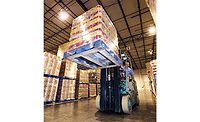Not far behind the cost of labor and fuel, tires are among the top operating expenses for most beverage fleets. Looking at just maintenance costs, tires rise to the top of the list.
In our 2015 Fleet Study Survey, nearly 60 percent of those who responded ranked tires as their highest maintenance cost, while 90 percent ranked tires among their top three maintenance costs. In terms of downtime, 44 percent of those who responded ranked tires among their top causes of unplanned repairs.
With that much of an effect on the bottom line, fleet managers need to pay special attention to controlling tire costs.
Early in 2014, we looked at some of the top “quick tips” for controlling tire costs, but a “big picture” strategy for managing a fleet’s tires can be just as important to the bottom line as keeping on top of the day-to-day details.
A few years back, we had the opportunity to learn about tire management strategy from one of the sharpest operators in the business, Bob Natsch, who at the time was Senior Vice President of Operations for Premium Beers of Oklahoma. In the intervening years, we’ve yet to find anybody with a better overall strategy for controlling tire costs. Since we first talked with Natsch, he has leveraged his achievements at Premium Beers into a successful consulting practice, R.E. Natsch Consulting, helping others improve their bottom line.
Even with a larger than average fleet at Premium Beers, Natsch purchased surprisingly few new tires from his local tire supplier. The trick to reducing the new tire budget was to supplement the local purchase of approximately 60 new tires per year with a similar number of “take-off” tires from 10-12 new trucks purchased every year.
Ordering new trucks with all-position tires on every axle, then removing the new tires/wheels from the drive axle(s) and replacing them with retreads already mounted on the fleet’s spare wheels allowed the virgin tires to be reserved solely for steer axle use.
Once the steer axle tires have accumulated 40,000 to 50,000 miles, they are sent out for retreading with an all position tread pattern. The retreaded tires are pulled for retreading or disposal once they are worn to a tread depth of no less than 3/32”. Unless the tire casings meet an early demise due to damage, each casing can be retreaded twice before being retired from service.
After retreading, the tires are remounted on spare wheels so they are already aired up and ready to go for tire changes in the shop or a service call to one of the fleet’s trucks out on the road. This reduction of downtime enabled by the quick “pit stop” turnaround of tire service calls does much to offset the minimal cost of the spare wheel inventory.
In addition to the cost-cutting measures employed in the purchase, repair and retreading of tires, aggressive maintenance will also hold down costs and maximize tire life. Supplementing the driver’s daily walk-around inspection, mechanics should check tire pressure and tread-depth any time a truck comes into the shop, and no less than once a month for trucks that haven’t otherwise needed to visit the shop.
Alignment and suspension components, as well as tire wear patterns, should be visually inspected and adjusted or repaired as needed whenever a truck is in the shop. This not only delivers the bottom-line benefit of maximizing tire life, but it also saves fuel by minimizing rolling resistance.
Beverage route trucks frequently operate in tight, obstacle filled quarters at delivery locations, so impact damage is one of the most frequent causes of tire and casing failures for many fleets. On regional trucks that see extended operation at highway speeds, heat build-up, especially in the summer months, can be a big contributor to tire failures. Improper inflation pressure exacerbates this heat build-up, underscoring the importance of a proactive inspection and maintenance program.
Natsch advised that when working to reduce tire costs, there are a few more details to remember:
The biggest enemy of tires is low pressure. If pressure isn’t maintained, that’s going to cause abnormal tire wear which will wear tires out much faster. So the number one goal is to keep tire pressure maintained.
Also, using a tread design that has more of a rounded shoulder will tend to glide off curbs much better and shouldn’t cut or tear as bad as a tread with a squared shoulder profile.
Finally, by partnering with a local tire dealer on retreading, mounting and inventory management is where you’ll save on your largest maintenance cost.




